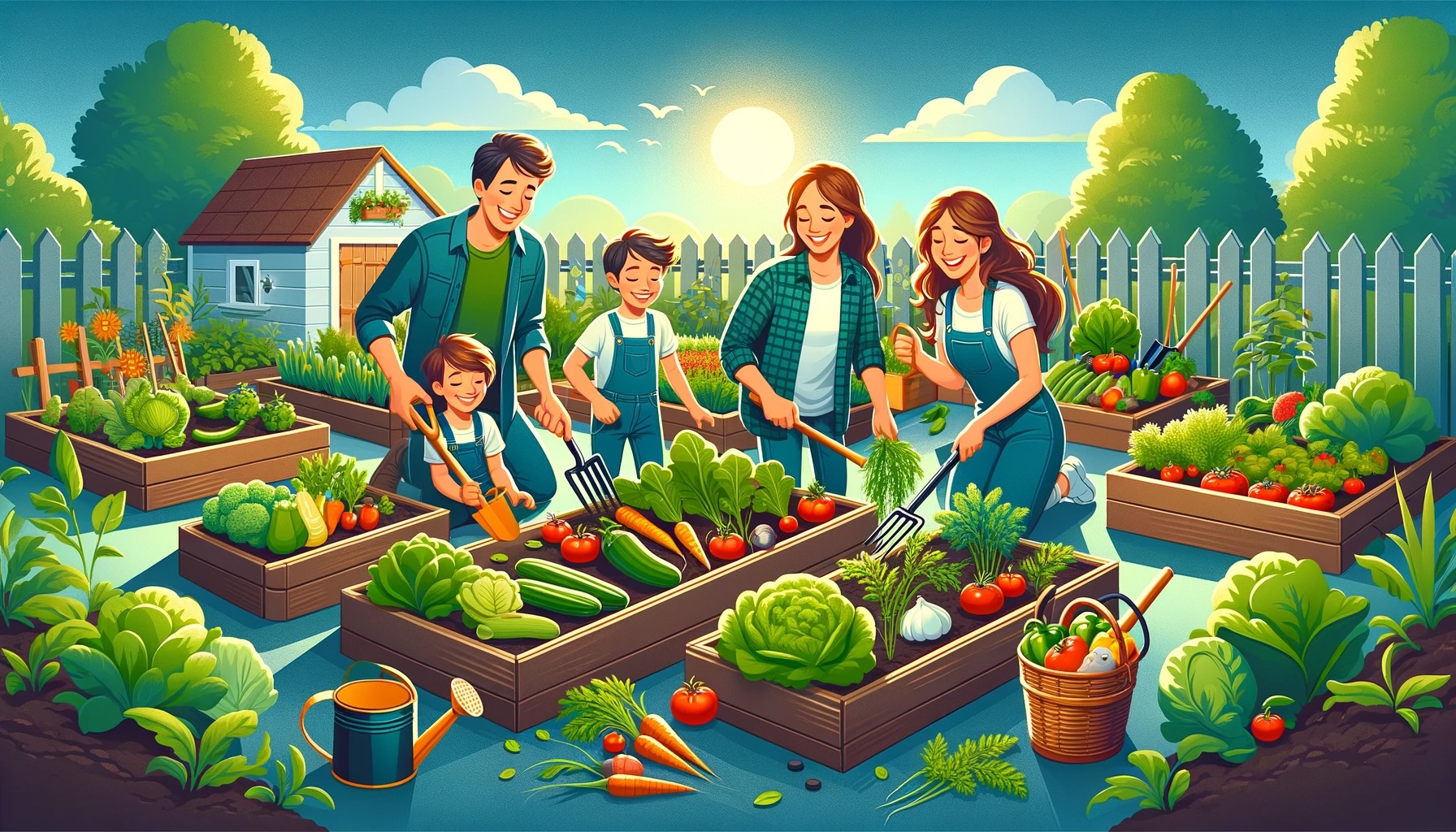Gardening is a delightful and enriching activity that can bring a family together. It’s about more than just planting and harvesting vegetables; it’s an opportunity to teach children about nature, responsibility, and the joy of growing their own food. A family garden becomes a place of learning, fun, and togetherness, creating lasting memories. In this blog post, we’ll guide you through creating your very own family garden. We’ll cover everything from planning to harvesting, ensuring your venture into vegetable gardening is a rewarding experience for everyone in the family. Let’s dig in and grow together!
Planning Your Garden
The first step in creating your family garden is planning. This involves three key aspects:
- Location: Choose a spot that receives ample sunlight, ideally 6-8 hours daily. Ensure it’s visible and accessible to encourage regular family visits and care.
- Soil Preparation: Good soil is the foundation of a healthy garden. Test your soil to understand its type and nutrient levels. Enrich it with compost or organic matter to improve fertility and texture.
- Garden Layout: Decide whether you’ll use raised beds, containers, or traditional in-ground planting. Raised beds and containers are great for beginners and can be more manageable for children. Plan your garden layout, considering the space needed for each vegetable and their growing conditions.
A well-planned garden ensures a better yield and a more enjoyable gardening experience. Involve your kids in this planning phase; it’s a great learning opportunity!
Selecting Vegetables
Choosing the right vegetables is crucial for a successful family garden. Here are some tips:
- Kid-Friendly Options: Select vegetables that are easy to grow and appeal to children. Examples include cherry tomatoes, carrots, radishes, and snap peas. Their bright colors and sweet flavors are often a hit with the little ones.
- Fast Growers: Children love seeing quick results, so include vegetables like lettuce, radishes, and spinach that grow relatively fast.
- Fun to Grow: Some vegetables, like pumpkins and sunflowers, are incredibly fun for kids to watch as they grow due to their size and unique characteristics.
- Seasonal Considerations: Choose vegetables according to the season. This not only ensures a healthy harvest but also teaches children about the growing cycle.
Involving kids in the selection process can increase their interest and excitement about gardening. Encourage them to pick a few vegetables they’re most excited to grow and eat!
Gardening with Children
Gardening with children not only nurtures their connection to nature but also teaches valuable life lessons. Here’s how to make it a fruitful and safe experience:
- Age-Appropriate Tasks: Assign tasks based on age and ability. Younger children can help with planting seeds or watering, while older ones can take on more complex tasks like pruning or composting.
- Educational Opportunities: Use the garden as a classroom. Teach them about plant life cycles, the importance of insects in the ecosystem, and how weather affects growth.
- Safety First: Ensure a safe gardening environment. Teach children to handle tools safely and to identify plants that should not be touched or eaten.
- Foster Responsibility: Assign regular gardening tasks to each child. This instills a sense of responsibility and pride in taking care of their plants.
- Make It Fun: Turn gardening into a game. For example, who can spot the most insects or name the growing vegetables.
- Celebrate Success: Celebrate the milestones, like the first sprout or harvest. This recognition boosts their confidence and joy in gardening.
Gardening with children is a rewarding way to spend quality time together while instilling a love for nature and healthy eating habits.
Maintaining Your Garden
A thriving garden requires regular maintenance. Here’s how to keep your garden flourishing:
- Watering: Teach your children the importance of regular watering. Early morning is the best time to water, as it reduces evaporation and fungal growth. Show them how to check the soil moisture to understand when plants need water.
- Weeding: Regular weeding is essential to prevent competition for nutrients and sunlight. It’s a great way for kids to learn about different plant species.
- Pest Control: Use organic methods for pest control to keep the garden safe for kids. Introduce natural predators like ladybugs, or use homemade sprays with ingredients like garlic or neem oil.
- Mulching: Mulch helps retain soil moisture and suppresses weeds. It’s also a great way to teach children about soil health.
- Pruning and Deadheading: These practices encourage healthy growth. Older children can learn these skills to help maintain plant health.
Involving your children in these activities not only keeps your garden healthy but also teaches them about the life cycle of plants and the importance of regular care.
Harvesting and Using Your Produce
The most rewarding part of gardening is harvesting. Here’s how to make it a fun and educational experience:
- Timing is Key: Teach your kids how to recognize when vegetables are ripe for picking. For example, tomatoes are best harvested when they’re brightly colored and slightly soft to the touch.
- Harvesting Techniques: Show them the correct way to pick vegetables to avoid damaging the plant. Some vegetables can be gently twisted off, while others may require scissors or a knife.
- Involving Kids in Cooking: Use your harvest in family cooking sessions. Let your children help wash and prepare the vegetables. This not only teaches them about food preparation but also instills a sense of pride in eating what they’ve grown.
- Preserving the Harvest: Discuss ways to preserve excess produce, like making sauces or freezing. This can be a whole new educational avenue for older children.
Harvesting time is a celebration of your garden’s yield and your family’s hard work. Enjoy these moments together!
Conclusion
Starting a family garden is a journey filled with learning, fun, and growth. It’s not just about the vegetables you grow, but the memories you create and the lessons you share. So, grab your gardening gloves, involve your kids, and start growing your family garden today!